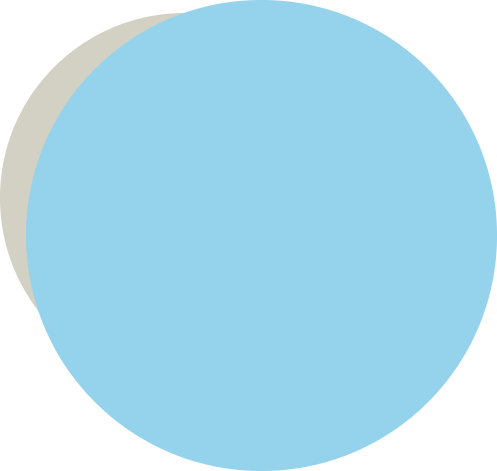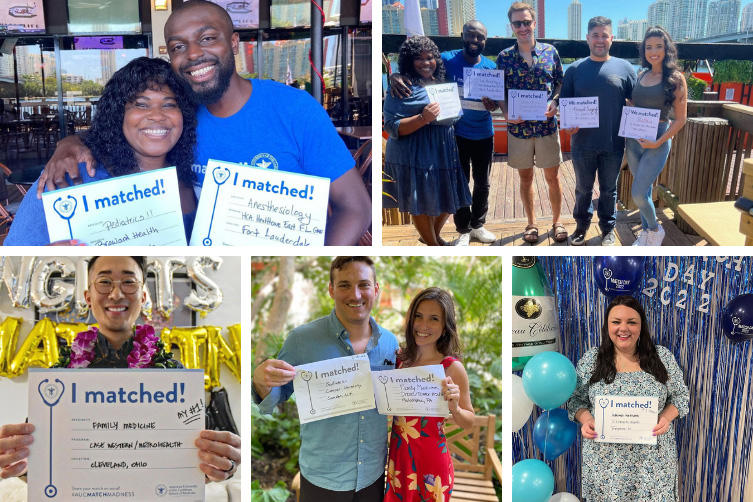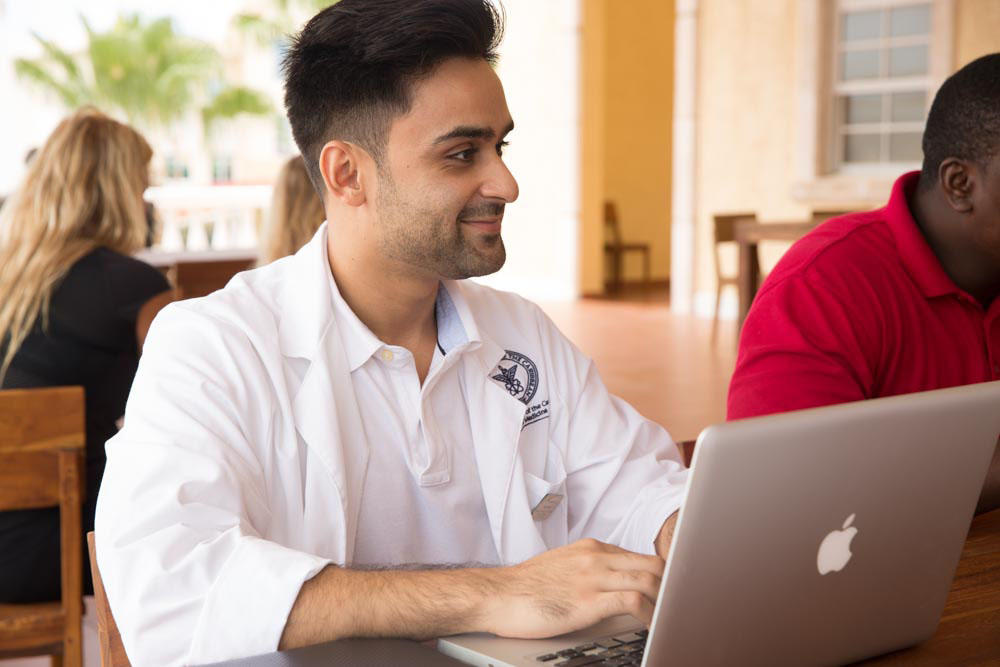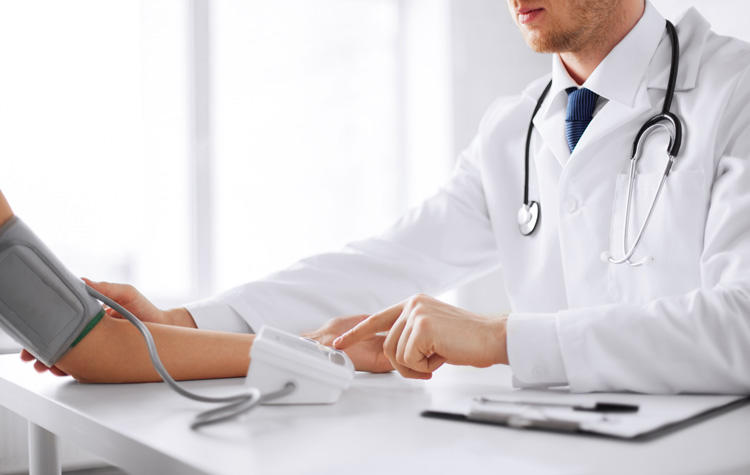Each year, medical students await Match Day with anticipation. On the third Friday of every March, thousands of graduating medical students will learn where they will be training for residency for the next several years. Residency is where doctors train in a specialty, so “The MATCH℠,” has a huge impact on the student’s future.
For most students, Match Day is ultimately a cause for celebration. The better prepared you are for the process, the more confident you will feel on Match Day.
WHAT IS THE MATCH?
Students graduate from medical school with a medical degree (MD), but they are still not licensed to practice independently until they complete additional training in a residency program. Residency programs typically last between three and seven years. In fact, residency training is a key requirement for obtaining a medical license.
According to the Journal of the American Medical Association, residency programs were introduced in the early 1900s. By the 1940s, competition between these programs became so fierce that institutions began “scouting” promising medical students early in their training, almost like modern professional sports recruiters. The MATCH was created in 1952 to bring order to the growing chaos.
In the United States, The MATCH is managed by the National Resident Matching Program® (NRMP®). The NRMP is the main system used to place graduating medical students into residency programs.
HOW DOES THE MATCH PROCESS WORK?
The MATCH has several parts as it unfolds from September to March. For medical students, it begins at the start of their fourth year. Prior to this, students have learned about different areas of medicine through clinical rotations. These rotations help them determine what specialty they would like to practice.
The MATCH application process opens every September. Fourth-year medical school students submit applications to residency programs through the Electronic Residency Application Service® (ERAS®). The submission package should include:
- ERAS Application
- Student’s personal statement and photo
- Letters of recommendations
- Medical Student Performance Evaluation (MSPE)
- Medical school transcript
- United States Medical Licensing Examination® (USMLE®)/COMLEX-USA transcript
Residents can submit many applications to different residency programs to maximize their chances of being accepted. However, the Association of American Medical Colleges (AAMC) warns that submitting too many applications represents a financial burden for many students without necessarily improving their outcomes. The AAMC offers a free tool that helps students calculate the cost of residency applications.
INTERVIEWS AND RANKED VOTING
Between October and February, residency programs invite promising applicants to interview at their institutions. Applicants travel to hospitals, meet with program faculty, and tour the facilities.
The Match uses ranked voting, allowing students to rank residency programs by creating a Ranked Order List (ROL). Residency faculty do the same—ranking students to fill open residency slots.
The American Academy of Family Physicians offers these recommendations for the ranking process:
- Ensure that your ROL includes your highly desired programs: Even if you doubt whether you’ll be accepted into an especially prestigious program, include it on your list. The logic of ranked voting means this will not prevent you from being accepted into the other programs on your list. If a program you have ranked does not accept you, programs lower on your list can still generate a match.
- Rank program preference accurately: The NRMP bases a match on how you prioritize your choices.
- Don’t limit your list: Submitting a short ROL will not increase your chances of getting placed in one of your top schools, particularly if you seek placement in highly competitive specialties. There is no weighting bonus for a short list and no penalty for a long list.
UNDERSTANDING THE MATCH SYSTEM
The NRMP finalizes the ranking lists in mid-February and feeds them into a system called Registration, Ranking, and Results (R3). The R3 system is a secure software that uses an algorithm to match applicants with programs. The NRMP algorithm is a complex mathematical formula that was the basis for the 2012 Nobel Prize in Economic Sciences.
The NRMP algorithm gives more weight to the applicant's preferences, but both parties must favorably rank each other for a match to occur. Additionally, residency programs must have positions remaining open for a match to take place.
The algorithm works like this:
- The R3 system first tries to match each applicant with their first-choice program. If successful, the student is “tentatively” matched. However, if higher-ranked candidates match with the institution, the candidate will lose this match.
- If a candidate's first choice isn't available or a higher-ranking candidate displaces a "tentative" student, R3 will attempt to place them with their second choice. If the second choice isn't available, R3 will move to the student's third choice. R3 will continue this process until it exhausts a student’s preference list.
- When R3 finds a secure match, a "tentative" match becomes a "confirmed" match. The confirmed match is where the student will attend residency training.
MATCH WEEK
Years of medical training and the long match process culminate in Match Week. Held the third week of every March, Match Week begins with students learning whether they are accepted into a residency program and ends with discovering where they will take their training.
Here's how the week plays out:
MATCH WEEK MONDAY
At 10 a.m. ET, the NRMP informs all applicants whether they’ve been placed in a residency program. They don’t know where they’ll be training on Match Monday—only that they’ve been accepted to a program. In 2022, 94.2% of all applicants were placed into residency programs on Match Monday. These students learn on Match Day Friday where they will receive training.
WHAT HAPPENS IF YOU DON'T MATCH TO A RESIDENCY PROGRAM?
Applicants who learn they haven't been placed in a residency program on Match Monday are eligible for the Supplemental Offer and Acceptance Program® (SOAP®), a matching process that takes place between Monday and Thursday afternoons of Match Week. In the 2022 MATCH, 2,262 of the 39,205 positions were unfilled after the matching algorithm was processed. During SOAP, students can apply to residency programs with unfilled positions. Click here for the 2023 NRMP SOAP Schedule and an outline for how it works.
By the conclusion of SOAP, 93.3% of the available positions in SOAP had been filled, resulting in a 99.6% fill rate overall for all positions placed in the 2022 Match and SOAP.
MATCH DAY
Match Week ends on the third Friday of March with Match Day. It is one of the most memorable and consequential days in the life of a medical student when they find out where they have placed at noon ET. This milestone is commemorated at almost every U.S. accredited medical school—including American University of the Caribbean School of Medicine (AUC).
A SUCCESSFUL MATCH DAY STARTS AT AUC
Each year, hundreds of AUC graduates receive the news that they have matched at leading hospitals across the United States and Canada. AUC achieved a 97% first-time residency attainment rate for 2022-2023 graduates*. In 2023, AUC students and graduates attained residencies in 24 specialties throughout 39 U.S. states and territories.
*Percent of students attaining a 2023-24 residency position out of all graduates or expected graduates in 2022-23 who were active applicants in the 2023 NRMP match or who attained a residency position outside the NRMP match
Get started on your path to Match Day by applying to AUC.
Related resources:





